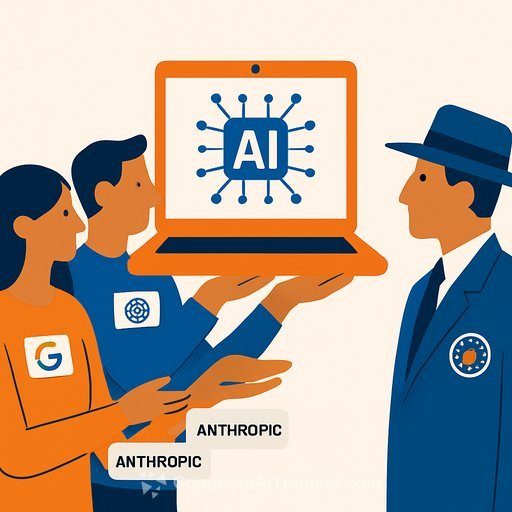AI Works for Governments: A Practical Blueprint for Public Leaders
Google and PwC have released "AI Works for Governments," a report aimed at helping public institutions deploy artificial intelligence with discipline and speed. It focuses on emerging economies, where the right starting moves can lift service quality, reduce waste, and build momentum even with limited digital infrastructure.
The message is clear: AI isn't just for private enterprise. It's a lever for public service delivery, policy execution, and economic growth-if leaders apply it with strong governance and measurable outcomes.
A Framework You Can Apply Now
The report proposes a phased approach: identify high-impact areas, launch focused pilots, and scale what works. It stresses data privacy, ethics, and standards to prevent bias and protect citizen trust.
- Pick high-value domains: healthcare, education, social protection, public safety, finance.
- Start with one or two pilots that relieve specific bottlenecks (e.g., eligibility verification, resource allocation, inspection scheduling).
- Set guardrails early: data governance, human-in-the-loop checkpoints, audit logs, and bias testing.
- Build for scale: interoperable data, APIs, and vendor-agnostic architecture.
- Measure ROI and outcomes, not hype: time saved, cost per case, satisfaction scores, error rates.
- Expand with public-private partnerships and international collaboration once pilots prove value.
Where Governments See Fast Wins
- Healthcare: triage, outbreak alerts, capacity planning, telehealth routing.
- Education: personalized learning support, teacher workload reduction, grant analytics.
- Benefit delivery: fraud detection with fairness checks, case prioritization.
- Procurement and finance: anomaly detection, demand forecasting, faster invoice processing.
- Emergency management: risk mapping, resource pre-positioning, real-time information.
Case Studies That Show ROI
Examples from Southeast Asia and Latin America show AI improving disaster response and public health monitoring. One government used predictive models to anticipate supply chain shocks, reducing emergency costs by millions.
The barrier isn't ideas-it's skills. The report calls for workforce training so AI augments, not replaces, frontline staff. If you're standing up training tracks, consider role-based learning paths and quick wins tied to live pilots.
- Set up a core team to deliver internal "AI 101 for policy and operations."
- Upskill data leads on responsible AI, evaluation methods, and safety review.
- Train program managers on prompt quality, change management, and measurement.
Need structured learning paths for public roles? Explore practical programs here: AI courses by job and AI certifications.
Governance, Privacy, and Trust
Strong policy and procurement guardrails reduce risk and speed adoption. The report underscores ethics and accountability as core to delivery, not side work.
- Data governance first: classified data handling, minimization, retention, and access controls.
- Human oversight: define when humans review, approve, or override system outputs.
- Fairness and safety: bias testing across demographics, red-teaming, and incident response plans.
- Transparency: plain-language model cards, documentation of training data sources, and clear citizen notices.
- Procurement: require evaluation benchmarks, audit rights, and exit options to avoid lock-in.
- Interoperability: prefer open standards to support cross-border cooperation and future upgrades.
Policy Implications
The report calls for international cooperation on standards to avoid fragmented adoption. It positions AI as a tool for equitable development, especially where digital infrastructure is still being built.
Expect debate over vendor bias. Reduce risk with tech-neutral procurement, independent evaluations, and transparency requirements. Focus on outcomes and accountability, not brand promises.
90-Day Action Plan
- Days 0-30: Form an AI steering group, select 2 high-impact use cases, map data sources, define success metrics and guardrails.
- Days 31-60: Launch pilots with a small, cross-functional team. Begin role-based training. Set up evaluation dashboards and bias testing.
- Days 61-90: Review results, publish a short public update, plan scale-up for what works, pause or redesign what doesn't, and align budget for the next phase.
Metrics That Matter
- Processing time reduced per case or request.
- Cost per outcome (e.g., cost per inspection cleared, cost per grant processed).
- Citizen satisfaction and complaint rates.
- Accuracy and fairness metrics across demographic groups.
- Security incidents and uptime for critical services.
- Training completion and tool adoption rates across departments.
Further Reading
The takeaway: start small, measure, and scale. With the right governance and partnerships, AI can help agencies deliver services that are faster, fairer, and more resilient.
Your membership also unlocks:






